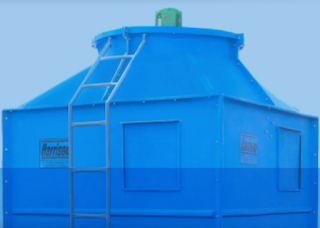Amazing world of Cooling Towers &Evaporative Air Coolers
Cooling towers are heat exchangers that use water and air to transfer heat from air-conditioning systems to the outdoor environment. Most commonly, they are used to remove heat from the condenser water leaving a chiller. Cooling towers are usually located on rooftops or other outdoor sites. Because they are frequently out of sight, they are often neglected by operation-and-maintenance technicians, resulting in lower cooling-system efficiency. This document will help you adopt best practices for the efficient operation and maintenance of cooling towers. There are two basic types of cooling towers, open and closed (sometimes called direct and indirect). Open (Direct) Cooling Towers- Open cooling towers expose the condenser water coming from the chiller plant directly to the atmosphere. This warm water is sprayed over a fill in the cooling tower to increase the contact area, and air passes through the fill. Most of the heat is removed by evaporation. The cooled water remaining afte...


